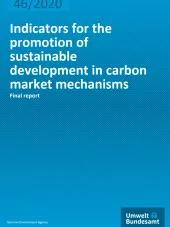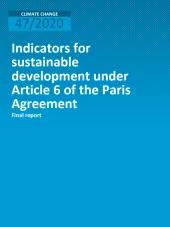The potential from synergies between GHG reduction activities and the promotion of sustainable development had not always been exploited to the extent possible in the past. Under the Clean Development Mechanism (CDM), for instance, neither a clear financial incentive nor a concrete political mandate was created to develop projects that were particularly conducive to sustainable development. Since then the Paris Agreement was adopted which – compared to the Kyoto Protocol – created a stronger link between both aspects and expected mitigation activities to also consider sustainable development. Almost at the same time the Sustainable Development Goals (SDGs) were globally agreed and provided a framework of agreed goals and indicators. This research project sought to overcome the previously identified barriers to combine SD and GHG mitigation impacts through the identification of practical solutions and concrete proposals for the implementation of SD indicators in GHG mitigation projects. We showed through “indicator pilots” that it was possible to find indicators that worked, were politically acceptable, financially sound, and clear to MRV. Developing the pilot set of indicators for SD in market-based activities had the following objectives:
- increase transparency and accessibility for project developers to identify existing synergies,
- improve identification of areas where safeguards against negative impacts are needed,
- allow identification of areas where (small) additional efforts can lead to (important) additional SD benefits. With emphasis on the latter being the element that ensures the activities do lead to additional SD benefit on its own and do not only claim existing side effects.
The project had three parts:
- Sustainable development indicators and their current use in market-based climate change mitigation mechanisms
- Improved approaches for implementing sustainable development indicators
- Sustainable development indicators and their role under the Article 6 mechanisms of the Paris Agreement





